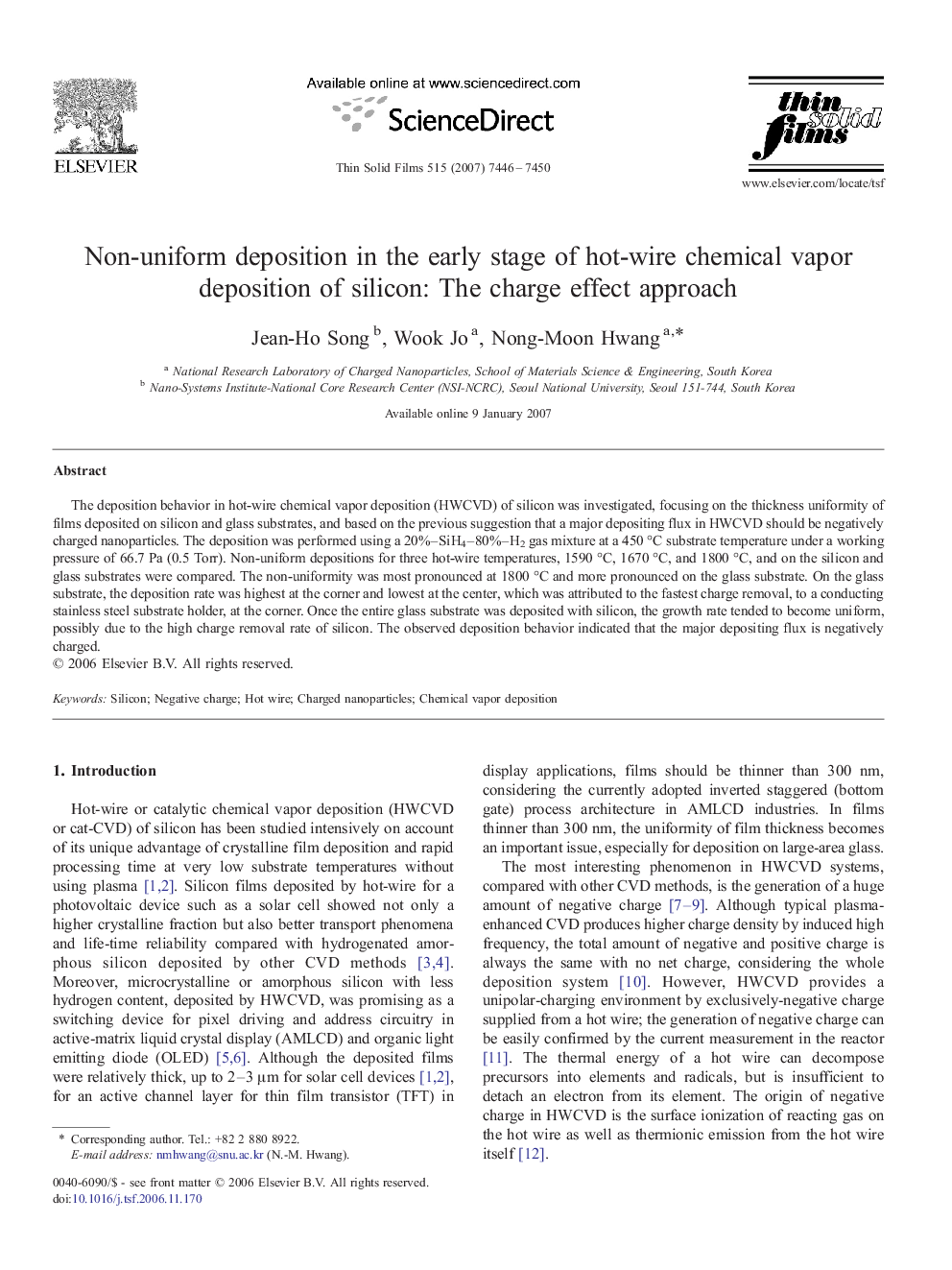| Article ID | Journal | Published Year | Pages | File Type |
|---|---|---|---|---|
| 1674517 | Thin Solid Films | 2007 | 5 Pages |
The deposition behavior in hot-wire chemical vapor deposition (HWCVD) of silicon was investigated, focusing on the thickness uniformity of films deposited on silicon and glass substrates, and based on the previous suggestion that a major depositing flux in HWCVD should be negatively charged nanoparticles. The deposition was performed using a 20%–SiH4–80%–H2 gas mixture at a 450 °C substrate temperature under a working pressure of 66.7 Pa (0.5 Torr). Non-uniform depositions for three hot-wire temperatures, 1590 °C, 1670 °C, and 1800 °C, and on the silicon and glass substrates were compared. The non-uniformity was most pronounced at 1800 °C and more pronounced on the glass substrate. On the glass substrate, the deposition rate was highest at the corner and lowest at the center, which was attributed to the fastest charge removal, to a conducting stainless steel substrate holder, at the corner. Once the entire glass substrate was deposited with silicon, the growth rate tended to become uniform, possibly due to the high charge removal rate of silicon. The observed deposition behavior indicated that the major depositing flux is negatively charged.
